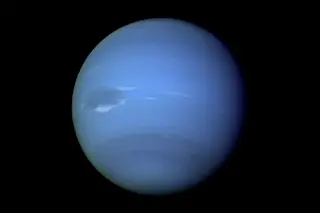Uranus and Neptune, the seventh and eighth planets, are largely a mystery — but that could change within the next two decades.
A study submitted to Arxiv by Amy Simon and Mark Hoffstadter, NASA veterans and experts on those planets, and Alan Stern, the principal investigator of the New Horizons mission, outlines a cost-effective plan to explore those planets — and maybe even visit a few new places on the way out.
The white paper, the end result of a working group setting their sites on Uranus and Neptune, calls for two separate crafts. One, a flyby mission of Uranus, would sweep within the magnetic field of the seventh planet, detailing its strange polar arrangement that sees the planet essentially rotating on its side, causing the magnetic fields to turn on and off as if someone were operating a light switch haphazardly in the interior. It might also drop an ...














